a&e features
John Waters is never wrong
In new book, the ‘filth elder’ has an opinion on just about everything
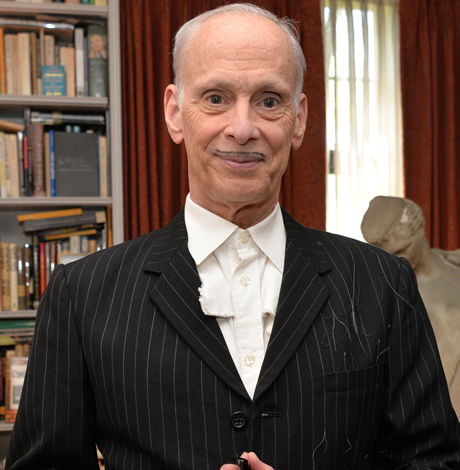
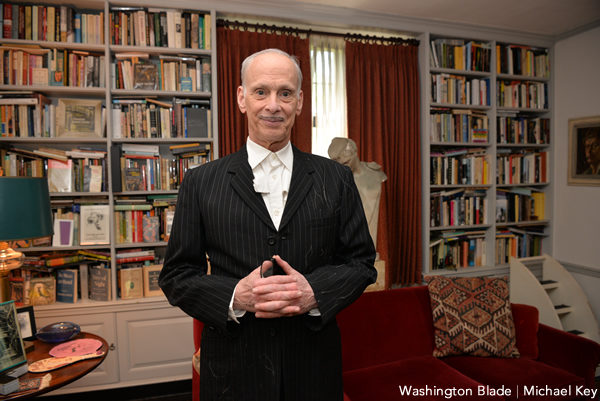
John Waters has had underwhelming meals in overpriced restaurants — so you don’t have to.
He’s been caught in long airport security lines. He’s taken the BoltBus to New York City and been delayed while the driver took a dump in the on-board restroom. He’s had to sit in a doctor’s waiting room with an embarrassing ailment and been barraged with questions from other patients who recognize him and demand to know what he’s got.
Now the Baltimore-based filmmaker and writer, who just turned 73, has put all of those experiences and more into a book of opinions and advice, presumably so people won’t have to endure what he has. Called “Mr. Know-It-All: The Tarnished Wisdom of a Filth Elder,” it’s his ninth book, and it comes out on May 21. He’s described it as “my opinion on everything” and “how to avoid respectability at 70 years old.”
When it comes out, readers will discover that “Mr. Know-It-All” isn’t just a book about coping with life’s indignities and humiliations, even though there’s plenty of guidance about that. It’s also part memoir, part celebrity tell-all and part movie industry guidebook with separate chapters about each of his last seven films, all filmed in Baltimore (“Polyester,” “Hairspray,” “Cry-Baby,” “Serial Mom,” “Pecker,” “Cecil B. Demented” and “A Dirty Shame.”)
The book is filled with anecdotes about many of the actors he’s worked with, including Kathleen Turner, Johnny Depp, Tracey Ullman and, of course, Divine. There’s the time Waters turned down Brad Pitt at an audition for “Cry-Baby” because Pitt was too handsome to be cast as Depp’s sidekick, a decision that he thinks makes him perhaps “the only director who ever said no to Brad Pitt.” He remembers that Rikki Lake lost her virginity halfway through “Cry-Baby;” how he called Tab Hunter out of the blue to star in “Polyester” and how he battled with motion picture censors to let him use the word “Pecker” as a movie title.
Other readers may be drawn to his essays about non-cinematic subjects, which range from art collecting and Brutalist architecture to Yippie protests, Andy Warhol and taking LSD at 70. In one chapter, he names the one female he has adored since childhood. In another, he imagines returning to the apartment he lived in during the 1960s, a sign that, in some cases, you can go home again (especially when you still live in the town where you grew up).
“Mr. Know-It-All is here to tell you exactly how to live your life,” he writes early in the book. “I’m never wrong.”
Though the title says it’s a book of wisdom, this is not a rehashed litany of someone else’s platitudes. All the advice he offers grows out of his own experiences. As a result, readers gain insights into the maker of “Pink Flamingos” and “Female Trouble” by learning what he’s gone through and how he dealt with it.
One of those insights is that Waters can be quite frugal and down to earth. He not only takes the inexpensive BoltBus to New York but also goes to a Laundromat when he spends the summers in Provincetown. (And of course, he hitchhiked across the country and wrote about it in his bestseller, “Carsick.”)
In many of his stories, Waters reveals a knack for handling even the most humiliating situations with humor and aplomb. He also says he licks important packages before he puts them in the mail — “to remove any ‘curse’ of show business rejection” — and instructs his staff to do the same. In the LSD chapter, he mentions texting “my boyfriend,” whom he never names.
Next week, Waters begins a national tour to launch his book, published by Farrar, Straus and Giroux. East Coast stops include Barnes and Noble’s Union Square location in New York City on May 21; Politics and Prose Bookstore in Washington (the 5015 Connecticut Ave., N.W. location, with first-come, first-served seating) on May 24 at 7 p.m. and a book signing at Atomic Books, 3620 Falls Road in Baltimore, on May 25 at 7 p.m.
West Coast stops include ticketed events at The Green Arcade at the McRoskey Mattress Loft, 1687 Market Street in San Francisco on May 30 at 7 p.m., and Book Soup at The Renberg Theatre (Los Angeles LGBT Center’s Village), 1125 N, McCadden Place in Los Angeles on June 1 at 7 p.m.
Waters recently sat down at his home for an interview with the Washington Blade to talk about his book and his life as a filth elder. The interview has been condensed.

WASHINGTON BLADE: A good alternative title for your book would be “The Influencer,” don’t you think? How To Win Friends and Influence People 2?
JOHN WATERS: I’m Norman Vincent Peale, you’re saying?
BLADE: You do give a lot of advice: Come up with a gimmick. Have backup plans. Get at least one other person to believe in you. Sound advice, with a John Waters twist.
WATERS: I agree with that totally.
BLADE: Why an advice book?
WATERS: Well, I always kind of parody things, so I thought an advice book coming from me would be kind of a parody in the first place. I needed that kind of genre to be able to talk about all the things I wanted to talk about.
In some ways it’s like “Shock Value” because “Shock Value” ended right before we made “Polyester,” so this has the rest of the movies in it. But I also wrote it from a viewpoint of how to tell young filmmakers how to deal with Hollywood and what happens and all that kind of stuff, and how you fail upward. And then the other subjects I had to put in about love, about fashion, about art, about death, about every possible thing. But to talk about them all, you need a theme that runs through the whole thing, so that’s how I came up with [giving] advice.
Do I expect every person to follow my advice? No, but I believe that I gave good advice. It’s not really told ironically. I believe everything I say in it. But I hoped to write a humorous book at the same time.
BLADE: Who are you giving advice to?
WATERS: I’m giving advice, first of all, to the people that like my work, because they’re hopefully the first people that buy the book. Secondly, even if you don’t know anything about me, I’m giving advice to younger people about how to handle what’s coming, failure and success, in your life if you’ve chosen to be in the arts in any way. So I think I’m trying to give advice to anybody probably younger than me, because older than me are dead, you know. And I tell you how to beat that too.
BLADE: You’re not writing just for the hardcore fans?
WATERS: No, not at all. If you’re never seen any of my movies, you can still read the book.
BLADE: A lot of your fans may be the “others” in society, those who don’t fit in or conform, the people in “Desperate Living” and other movies.
WATERS: The people that used to be the “others” in society are often now the leaders. Everybody wants to be the “other” now. They didn’t used to. Even Trump would probably want to be an outsider. Obama thought he was an outsider. Everybody wants to be an outsider, and I want to be an insider. I said that in “Make Trouble,” that it’s more fun to cause trouble from within. Which is what “Hairspray” did.
BLADE: But a lot of the others aren’t the ones who would typically be disposed to take advice.
WATERS: Maybe from me they might.
BLADE: Why should someone follow your advice?
WATERS: You don’t have to. I think you could read the book and not follow one bit of it and still enjoy the book. You don’t have to. I don’t expect anybody to, really.
BLADE: Your advice grows out of your experiences. It’s not warmed-over Norman Vincent Peale. And because it comes from within, your advice in turn provides insights into you.
WATERS: I always thought that is a joke, that book, which I probably never read. But my parents had it and it was such a thing then that it became a joke in a way. That same title could apply to this book.
BLADE: The other thing about your advice is, you chronicle all the ways you’ve suffered indignities. You’ve had bad dinners at good restaurants. You’ve had bad seats on international flights. You’ve been harassed at the doctor’s office.
WATERS: I’m also saying all the wonderful things that happened to me. So basically, there are different kinds of problems. It is a high-class problem to worry about being recognized in a doctor’s office. It’s the one time that it’s really bad to be seen. Although, if you weren’t [famous], you wouldn’t have gotten the appointment. So in the long run, it isn’t bad.
BLADE: Do bad things happen to you more than most, like Joe Btfsplk in “Li’l Abner?”
WATERS: No. I say in the book, not one bad thing has ever happened to me from being famous, in any way. It really hasn’t. I mean, high-class problems, some of the things I talk about. But, generally, I can bitch about flying all the time. Bitch about first class, which is really bold. But I get to fly all the time and I don’t pay for it. But I’m working, you know? So I’m trying to tell people that when bad things happen to them, they can use it and how they can appreciate it and how they can look back on it and it doesn’t mean really anything terrible.
BLADE: You bring up all these universal things that anybody can identify with and you’ve come out on the other side, none the worse for wear from the indignities you’ve suffered.
WATERS: Everybody has indignities.
BLADE: Are you more sensitive to things than others?
WATERS: No, I don’t think so. I think I notice them more and it’s more, like, ludicrous, some of the problems that you get from being known.
BLADE: And then you use it for comic relief.
WATERS: Yeah, comic relief. In my own life, even.
BLADE: Is there one disappointment that tops them all?
WATERS: I only regret one thing, smoking cigarettes. It’s the only thing I regret in life. Because I’ll probably die from it. I mean, I don’t have cancer, but I’m just saying that, both my parents died from some form of cancer. They were 90 though. They had a long, good life. So, yes, I regret smoking cigarettes.
BLADE: You lived through all these indignities, and that’s a sign that others can too.
WATERS: The other day in New York somebody yelled at me, a homeless person, ‘You’re still alive?’ Which really made me laugh. I thought, ‘Well, yes I am, are you?’
BLADE: You and the Queen of England ought to compare notes.
WATERS: She probably has some really good ones.
BLADE: On your book tour, you’re appearing at Politics and Prose in Washington. Is this book political?
WATERS: Sure it is. All humor is political. And this book, definitely. I have a whole chapter, ACT BAD, which is really [suggesting ways] to go further than ACT UP did. I think comedy is political, trying to get you to laugh at things. I think every chapter in this book is political. But the worst way you can be political [is to] rant. If you get people to laugh, they’ll listen. If you lecture, in a strident tone, like Elizabeth Warren, no one will pay attention. Even though I totally agree with her politics, I hate to hear her talk. She’s never said a funny thing in her life. So the thing is, it’s important, if you want to change people’s minds, to make them laugh. It’s the first way to get their attention.
BLADE: What will you be doing at Politics and Prose?
WATERS: Well, probably a conversation with somebody and read a chapter and sign books. Like what I do everywhere. It’s always “a conversation with.” It’s basically a free lecture tour.
BLADE: As opposed to Atomic Books in Baltimore, where it’s primarily a book signing.
WATERS: That is usually the biggest one in the whole country, which is pretty amazing. That tiny bookshop, on the last two books, I think, sold even more than Barnes and Noble in New York.
BLADE: For your “Carsick” book-signing there, it was raining and the line was around the block.
WATERS: That bookstore, I get all my fan mail there. It’s really a great place, so I’m all for it.
BLADE: Does your book have any bombshells in it? Landing Tab Hunter for “Polyester?” Not casting Brad Pitt when he auditioned?
WATERS: That’s not up to me to say. The only thing I could think in there, maybe, is the [taking] LSD thing, in a way. That’s the stunt of the book. That’s something that I did that I thoroughly enjoyed. I think if there’s a sentimental chapter in the book about friendship, then maybe that is that. If I had known how strong the LSD was that I took, I probably would have been uptight. But I didn’t and it was great. I spent eight months getting the right acid from the purest source I could find, practically from Timothy Leary’s asshole. The Blade can print that. But the provenance of it was high and it was great. I don’t have to ever do it again. Just like I don’t have to ever hitchhike across the country again. Why would I? I did it. I don’t know if that’s newsworthy, but that would be, maybe.
BLADE: You had a big build-up about it in the book: We don’t know what this is going to do to us. And then you stopped hallucinating and it was OK and the sun rose…
WATERS: It was more than OK. It was great. I never had a bad experience when I was young, or I probably would have never done it. What I wanted to see is, what is it like to do it now, when I’m 70 years old? I certainly would never imagine that many 70-year-olds try to take acid. Especially if you haven’t done it since you were young.
BLADE: Do people still take LSD?
WATERS: Oh yeah. All the young people now do micro-doses. All the people that work in Google. All the tech kids take teeny doses of it. But not many 70-year-olds take it. People I know don’t take it.
BLADE: You write that you tried to get transgender pioneer Christine Jorgensen in a movie. That’s something probably a lot of people don’t know. You’ve sprinkled in all kinds of things that are going to be part of your lore.
WATERS: There are lots of things that people don’t know. But I don’t know that that means it’s Stop the Press. Most everything in the book is probably new information to most people.
BLADE: Who do you wish had been in one of your movies but never was?
WATERS: Always Meryl Streep. But I would have had to stop her from doing a Baltimore accent. And she would have done it brilliantly.
BLADE: Did you have a part for her?
WATERS: You know, at times, any of those movies she could have been in, yeah. We’ve met before, maybe a couple of times, at parties. She’s lovely. But she didn’t say, “Oh, I’ve been dying to work with you.”
BLADE: Roseanne Barr has come up.
WATERS: Well, Roseanne, when I dealt with her, she was a liberal. Completely. Yes, she came up a couple of times. I was friendly with her.
BLADE: For “Serial Mom?”
WATERS: Yeah. “And A Dirty Shame.” She was possible for that at one point. So, I was always friends with a liberal. I did her show and everything. Traci Lords was on her show. Who knows? I don’t know. I guess she’s just on the Internet too much.
BLADE: Who was the greatest delight to work with?
WATERS: They all were a delight, in a way. I mean, making movies is horrible. I say that in the book. Basically, it’s not fun, because there’s so much pressure and you have to do something every day and we’re not going to get this shot and it’s going to be over budget. But they all were team players. That’s what I can say they were.
Somebody said about my mother after she died: She was game. And they were game. They had to be game, to come with us, come to Baltimore, especially joining a group of people that had known each other for 30 years, a lot of them. I didn’t have any trouble with any of them. They were pros. But we were pros to them. I think I was prepared. I knew what to do. It wasn’t like we mistreated them. And they sort of got into the spirit of it.
BLADE: Would you do a word association? Kathleen Turner.
WATERS: A pro. Still see her. Great actress. Stage. Screen. Movies. She could play men, women, anybody with great conviction.
BLADE: Johnny Depp from “Cry-Baby.”
WATERS: I’m on his new album, I hear. I’m not sure how. I remember I talked to him on the phone with Alice Cooper recently and he said, “Say this.” I don’t remember what I said, so I guess they put it in the album like when I did in The Creep [a song with Nicki Minaj]. Johnny Depp was always a pro with me.
BLADE: Tab Hunter.
WATERS: Well, he voted for Reagan, you know. He used to shock me. He was for Trump, too. He used to laugh when he told me, because he knew how crazy it made me. I love Tab. You know, that’s the thing. He was from a different era. Completely from a different era.
BLADE: Was he like Rock Hudson?
WATERS: Rock Hudson, I don’t know if he was a Republican. Tab, I think was always a Republican. Oh yeah, he was in the closet forever. He had to be. It was illegal. You know. He was loved by every woman in America. It would have ruined his career. And he wrote about all that in his book.
BLADE: Did he write about you?
WATERS: Yeah. He was lovely. I stayed friends with him right up until the end. I just talked to his husband recently. Tab was great. He was a team player too. Lovely to Divine. Matter of fact, he liked the experience so much he went and made a movie with Divine afterwards, called “Lust in the Dust.”
BLADE: Andy Warhol?
WATERS: I remember him at the Baltimore Museum of Art meeting Edith [Massey] and saying, where did you find her? And he was very supportive. He took Fellini to see “Pink Flamingos.” He put Divine on the cover of Interview. He was always supportive.
BLADE: Mink Stole. You named her?
WATERS: Her real name is Nancy Stoll. S-t-o-l-l. I knew her forever. I met her in Provincetown. She was early in my films. She was a character actress, always. She usually played Divine’s enemy. We’ve been friends forever and ever. And I think she’s a really good actor. She still works all the time.
BLADE: Any way to sum up Divine, 31 years after his death?
WATERS: He gets more and more famous as the years go by. And he’d still rather be here. He’d be pissed he’s dead. I’m still shocked he’s dead. I still am. That’s still a shock. But, it’s kind of amazing. Well, we’re all being buried in the same graveyard where he is, you know, all my friends. Obviously, he is still with us.
BLADE: You’ve been good to the guys who commissioned the Divine mural in Baltimore, Jesse Salazar and Tom Williams.
WATERS: They were lovely. Why wouldn’t I be?
BLADE: Your book has only one chapter that’s named after a female.
WATERS: Betsy.
BLADE: The finger-painting chimp from the Baltimore zoo. You reveal this life-long love affair that you’ve kept secret until now.
WATERS: Well, I didn’t have sex with Betsy. I want to make sure that people understand that.
BLADE: You wrote a chapter about her appearances on TV and about The Golden Age of Monkey Art, which she inspired.
WATERS: I just remembered her in that dress and getting national attention and being all over the country. She was on Garry Moore, who was from Baltimore, too.
BLADE: In the last chapter, you write about death and dying, specifically about your death. You try to imagine what happens after you die, and you go back and visit your first apartment at 315 E. 25th Street in Baltimore. Why so morbid?
WATERS: Is it morbid? I don’t think it’s morbid. I think, who at 70-some years old doesn’t think about that?
BLADE: Why such a potential downer?
WATERS: You think it’s a downer? I don’t think it’s a downer… I think everybody at 73 [thinks about death], and I think my friends think about it more than I do. I don’t think about it that much. But you can’t help it when you go to funerals and you think, I am 73, you know, something is going to get you. So I tried to just imagine beating it, how I could be such a control freak that I would refuse to die. And I do always dream about that apartment, so it is just a fantasy of what happens after you die.
But it was to me dealing with the one subject that you’re really not supposed to joke about or kind of focus on. To think about it was sort of liberating in a way, to go through the whole thing. Except that I want to be sure that just because I write something here to be funny, it doesn’t mean that I want my heirs to follow every single thing. Like I say in there, I don’t want something funny on my tombstone. So, I don’t know. I thought it was optimistic. I beat death in it in a way, spiritually at least. That’s optimistic.
BLADE: How is your health?
WATERS: My health is fine.
BLADE: You didn’t write the book to fight death?
WATERS: Well, you write all books to fight death. I mean, I’ve never been as busy as I am. I have more projects than I’ve ever had in my entire life.
BLADE: You don’t name in the book any kind of significant other or life partner.
WATERS: And I never would. Because every person I’ve ever been involved with …doesn’t want to be public. I wouldn’t want somebody that would want to do the red carpet with me. I don’t want a groupie. I don’t want a fan. I want somebody that has their own life.
BLADE: Do you have a partner?
WATERS: Yes, I do.
BLADE: Is that in the book?
WATERS: Obliquely.
BLADE: You don’t want to say who it is?
WATERS: If you don’t keep some things private, you don’t have a personal life. It’s the same thing I say, I have some restaurant receipts that are not tax-deductible. That means I have a personal life. When I read celebrities are telling everything, I think, don’t you have any friends?
BLADE: Your book is so wide ranging it makes one wonder what you’re saving for the next one. After “Mr. Know-It-All,” what is there to write about?
WATERS: Do I have any stories left? Well, I’m writing a novel. I’m on page 64. So, yes, there’s stuff to write about.
BLADE: Is that why your next book is fiction, because you’ve exhausted the autobiography?
WATERS: I’ve written 17 movies. They‘re fiction. The first part of “Carsick” was fiction, too, except that I was in it. That makes it a lot easier. I had never written a novel, so I wanted to try it.
BLADE: Are you ever going to slow down?
WATERS: I hope not. I don’t need to slow down. I like what I’m doing. I don’t know. I guess when I drop dead, I’ll have to.
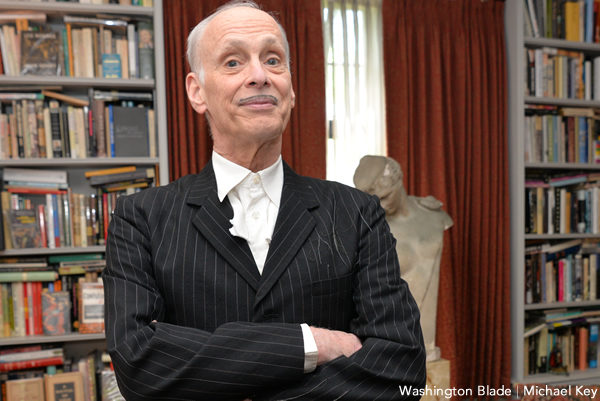
a&e features
Doug Spearman takes his chance
‘Noah’s Arc: The Movie’ debuted on Paramount+ last month

There’s no question that when Patrik-Ian Polk’s series “Noah’s Arc” premiered on Logo 20 years ago, it was a groundbreaking creation. The story of a group of Black gay men and their wonderful friendship. The titular arc was that of the cute main character, Noah (Darryl Stephens), and his close-knit circle of friends, including Chance played by gay actor Doug Spearman. This compelling and loving fraternity may, in fact, be what brought viewers back repeatedly, including a 2008 movie, “Noah’s Arc: Jumping the Broom,” as well as the 2020 “Noah’s Arc” short, and now, a new full-length feature “Noah’s Arc: The Movie,” debuting on Paramount+ on June 20. In the movie, filled with equal measures of laughs and tears, Chance, who has faced a devastating loss, finds his dependable friends there, ready to support and comfort him at a moment’s notice. I had the pleasure of speaking with Spearman the morning of the streaming premiere of “Noah’s Arc: The Movie.”
WASHINGTON BLADE: Doug, since the early 2000s, when the “Noah’s Arc” series premiered on Logo, you have been playing the character of Chance, including in the latest installment, “Noah’s Arc: The Movie.” What was it about Chance that appealed to you as an actor?
SPEARMAN: When Patrik (-Ian Polk) called me to ask me to play him (Chance), I was at JFK airport in the baggage claim, waiting for a suitcase. He explained what the part was. The thing that stuck out to me was the fact that Chance was in a long-term relationship with another Black man. And, they had a child; they had a 4-year-old daughter named Kenya. I had never seen two Black gay men raise a child on TV before. I thought it was the most revolutionary thing I’d ever seen. I immediately thought I’ve got to do this because that was something nobody had seen. I thought it was incredibly important to take the part.
BLADE: “Noah’s Arc: The Movie” was, once again, written and directed by Patrik-Ian Polk, who you just mentioned, is the creator of the entire franchise. What’s the secret to your long-standing working relationship?
SPEARMAN: [Laughs] the whole team, all of us, are like a band of brothers. We fight like brothers, we come together like brothers, we hash things out, we talk, because we’re all very different from our characters. I think the challenge of playing these guys and then uplifting these men, playing a part, especially something written by Patrik, is like solving a math equation. There’s always a challenge that’s enjoyable for me as an actor: to try to find out what it is that Patrik wants, and then how do I do it.
BLADE: I think you do a very good job of it.
SPEARMAN: Thank you very much
BLADE: In the years between “Jumping the Broom” and the new full-length movie, many changes have occurred, and the story addresses some of them, including gay widowhood, which is something that the aging community is now confronting, as well as mental health issues. Please say a few words about how you approached those subjects in the new movie.
SPEARMAN: I had a lot of loss in my life, right before we started shooting. Two months before we started shooting the first series, my mother died. I was going through the grief process through that whole first season. Since then, I’ve lost a lot of people in my life. In fact, when we started shooting the second season, the second week we were shooting, my ex died of a heart attack. I was having to fold that into what I was doing with my life on the set and off the set. You’ve got to show up and you’ve got to do your work. The first two seasons of “Noah’s Arc” are always tinged with the memory of grief. So, when I had to deal with the death that Chance faces (in the new movie), which is a significant death in his life, it wasn’t that hard to reach back, especially the scene in the graveyard. It was something that I unfortunately could pull from personal experience.
BLADE: Shifting gears, the movie features delightful cast surprises, including Jasmine Guy and TS Madison. Did you have a chance to interact with either or both when they were on set?
SPEARMAN: No, I didn’t have any scenes with Jasmine, and I missed her. I wish I had gotten to see her because I actually got to direct Jasmine for a CBS promo shoot for “Queen,” back in the early ‘90s. I had a huge crush on her when she was on “A Different World.” So, I really would have liked to reconnect. But TS and I got to see each other every day because I was in all her scenes. It was extraordinary being around somebody like that. That is one outspoken woman!
BLADE: Even though Beyoncé never makes an appearance in the movie, there’s a lot of talk about her. Would you say you are a Beyoncé fan?
SPEARMAN: Yes! I’m breathing! Yes, I’m a Beyoncé fan. I actually got the chance to meet her. I knew her mom. Her mom was extraordinary to me. She is in the second movie I directed. She also gave us a wedding gown to use in the very first scene of the movie. That family is extraordinarily important to me. Not only just to be a fan, but to be somebody who’s gotten to know them and work with them and see how hard they work. I don’t think anybody works as hard as Tina or Beyoncé.
BLADE: There was a recent news item about gay actor Benito Skinner of the Amazon Prime series “Overcompensating” being told not to bother auditioning for straight roles. As an out actor yourself, how important do you think it is for queer characters to be portrayed by queer actors, and vice versa?
SPEARMAN: Being queer is a multifaceted identity. There’s no one kind of queer person. I think finding the best actor that’s your first circle of casting. I think one of the joys about being an actor is that you get to play different parts. I play straight guys all the time. Dads and husbands and things like that. I think a lot of people are told not to do it. In fact, I wouldn’t be Chance if the actor who was originally cast as Chance hadn’t been pulled out of the series by his agents because they didn’t want him to play a gay character.
BLADE: That’s amazing! Thank you for sharing that. Without giving away too much, the ending of the movie is a little ambiguous, even ending with a question mark. If there was a “Noah’s Arc: The Movie” sequel, would you come back for that?
SPEARMAN: Yeah! A lot of it would depend on what Chance’s journey is going to be like. Patrik and I have conversations like that all the time. He’s very interested and supportive of input. I hope I would be, as we all would be, part of the creative growth with these characters. They live in Patrik’s head, and he writes them, but we’re the ones who have to flesh them out. It’s a conversation, it’s always a conversation.
BLADE: You are currently performing in Molière’s “The Imaginary Invalid” as part of the New Orleans Shakespeare Festival at Tulane. What has this experience been like for you?
SPEARMAN: It’s extraordinary! I started on stage when I was seven. There’s nothing like working with a live audience and having that immediacy. I’m working with an extraordinarily talented cast in a really great play, and I have some of the best scene partners I could ever want.
BLADE: Are there any upcoming film or TV projects you’d like to mention?
SPEARMAN: I’m still a writer, and I’m still a director, and I’ve still got scripts that I would like to make. I have a little something that’s a cross between “Treme” and “Bridgerton” that I want to do. I’m always trying to figure out what the next thing is.
a&e features
Visit Cambridge, a ‘beautiful secret’ on Maryland’s Eastern Shore
New organization promotes town’s welcoming vibe, LGBTQ inclusion

CAMBRIDGE, Md. — Driving through this scenic, historic town on Maryland’s Eastern Shore, you’ll be charmed by streets lined with unique shops, restaurants, and beautifully restored Victorian homes. You’ll also be struck by the number of LGBTQ Pride flags flying throughout the town.
The flags are a reassuring signal that everyone is welcome here, despite the town’s location in ruby red Dorchester County, which voted for Donald Trump over Kamala Harris by a lopsided margin. But don’t let that deter you from visiting. A new organization, Proudly Cambridge, is holding its debut Pride event this weekend, touting the town’s welcoming, inclusive culture.
“We stumbled on a beautiful secret and we wanted to help get the word out,” said James Lumalcuri of the effort to create Proudly Cambridge.
The organization celebrates diversity, enhances public spaces, and seeks to uplift all that Cambridge has to share, according to its mission statement, under the tagline “You Belong Here.”
The group has so far held informal movie nights and a picnic and garden party; the launch party is June 28 at the Cambridge Yacht Club, which will feature a Pride celebration and tea dance. The event’s 75 tickets sold out quickly and proceeds benefit DoCo Pride.
“Tickets went faster than we imagined and we’re bummed we can’t welcome everyone who wanted to come,” Lumalcuri said, adding that organizers plan to make “Cheers on the Choptank” an annual event with added capacity next year.
One of the group’s first projects was to distribute free Pride flags to anyone who requested one and the result is a visually striking display of a large number of flags flying all over town. Up next: Proudly Cambridge plans to roll out a program offering affirming businesses rainbow crab stickers to show their inclusiveness and LGBTQ support. The group also wants to engage with potential visitors and homebuyers.
“We want to spread the word outside of Cambridge — in D.C. and Baltimore — who don’t know about Cambridge,” Lumalcuri said. “We want them to come and know we are a safe haven. You can exist here and feel comfortable and supported by neighbors in a way that we didn’t anticipate when we moved here.”
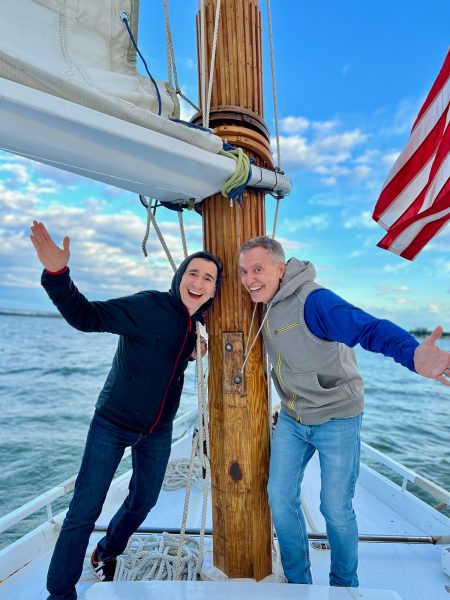
Lumalcuri, 53, a federal government employee, and his husband, Lou Cardenas, 62, a Realtor, purchased a Victorian house in Cambridge in 2021 and embarked on an extensive renovation. The couple also owns a home in Adams Morgan in D.C.
“We saw the opportunity here and wanted to share it with others,” Cardenas said. “There’s lots of housing inventory in the $300-400,000 range … we’re not here to gentrify people out of town because a lot of these homes are just empty and need to be fixed up and we’re happy to be a part of that.”
Lumalcuri was talking with friends one Sunday last year at the gazebo (affectionately known as the “gayzebo” by locals) at the Yacht Club and the idea for Proudly Cambridge was born. The founding board members are Lumalcuri, Corey van Vlymen, Brian Orjuela, Lauren Mross, and Caleb Holland. The group is currently working toward forming a 501(c)3.
“We need visibility and support for those who need it,” Mross said. “We started making lists of what we wanted to do and the five of us ran with it. We started meeting weekly and solidified what we wanted to do.”
Mross, 50, a brand strategist and web designer, moved to Cambridge from Atlanta with her wife three years ago. They knew they wanted to be near the water and farther north and began researching their options when they discovered Cambridge.
“I had not heard of Cambridge but the location seemed perfect,” she said. “I pointed on a map and said this is where we’re going to move.”
The couple packed up, bought a camper trailer and parked it in different campsites but kept coming back to Cambridge.
“I didn’t know how right it was until we moved here,” she said. “It’s the most welcoming place … there’s an energy vortex here – how did so many cool, progressive people end up in one place?”
Corey van Vlymen and his husband live in D.C. and were looking for a second home. They considered Lost River, W.Va., but decided they preferred to be on the water.
“We looked at a map on both sides of the bay and came to Cambridge on a Saturday and bought a house that day,” said van Vlymen, 39, a senior scientist at Booz Allen Hamilton. They’ve owned in Cambridge for two years.
They were drawn to Cambridge due to its location on the water, the affordable housing inventory, and its proximity to D.C.; it’s about an hour and 20 minutes away.
Now, through the work of Proudly Cambridge, they hope to highlight the town’s many attributes to residents and visitors alike.
“Something we all agree on is there’s a perception problem for Cambridge and a lack of awareness,” van Vlymen said. “If you tell someone you’re going to Cambridge, chances are they think, ‘England or Massachusetts?’”
He cited the affordability and the opportunity to save older, historic homes as a big draw for buyers.
“It’s all about celebrating all the things that make Cambridge great,” Mross added. “Our monthly social events are joyful and celebratory.” A recent game night drew about 70 people.
She noted that the goal is not to gentrify the town and push longtime residents out, but to uplift all the people who are already there while welcoming new visitors and future residents.
They also noted that Proudly Cambridge does not seek to supplant existing Pride-focused organizations. Dorchester County Pride organizes countywide Pride events and Delmarva Pride was held in nearby Easton two weeks ago.
“We celebrate all diversity but are gay powered and gay led,” Mross noted.
To learn more about Proudly Cambridge, visit the group on Facebook and Instagram.
What to see and do
Cambridge, located 13 miles up the Choptank River from the Chesapeake Bay, has a population of roughly 15,000. It was settled in 1684 and named for the English university town in 1686. It is home to the Harriet Tubman Museum, mural, and monument. Its proximity to the Blackwater National Wildlife Refuge makes it a popular stop for birders, drawn to more than 27,000 acres of marshland dubbed “the Everglades of the north.”
The refuge is walkable, bikeable, and driveable, making it an accessible attraction for all. There are kayaking and biking tours through Blackwater Adventures (blackwateradventuresmd.com).
Back in town, take a stroll along the water and through historic downtown and admire the architecture. Take in the striking Harriet Tubman mural (424 Race St.). Shop in the many local boutiques, and don’t miss the gay-owned Shorelife Home and Gifts (421 Race St.), filled with stylish coastal décor items.
Stop for breakfast or lunch at Black Water Bakery (429 Race St.), which offers a full compliment of coffee drinks along with a build-your-own mimosa bar and a full menu of creative cocktails.
The Cambridge Yacht Club (1 Mill St.) is always bustling but you need to be a member to get in. Snapper’s on the water is temporarily closed for renovations. RaR Brewing (rarbrewing.com) is popular for craft beers served in an 80-year-old former pool hall and bowling alley. The menu offers burgers, wings, and other bar fare.
For dinner or wine, don’t miss the fantastic Vintage 414 (414 Race St.), which offers lunch, dinner, wine tasting events, specialty foods, and a large selection of wines. The homemade cheddar crackers, inventive flatbreads, and creative desserts (citrus olive oil cake, carrot cake trifle) were a hit on a recent visit.
Also nearby is Ava’s (305 High St.), a regional chain offering outstanding Italian dishes, pizzas, and more.
For something off the beaten path, visit Emily’s Produce (22143 Church Creek Rd.) for its nursery, produce, and prepared meals.
“Ten minutes into the sticks there’s a place called Emily’s Produce, where you can pay $5 and walk through a field and pick sunflowers, blueberries, you can feed the goats … and they have great food,” van Vlymen said.
As for accommodations, there’s the Hyatt Regency Chesapeake Bay (100 Heron Blvd. at Route 50), a resort complex with golf course, spa, and marina. Otherwise, check out Airbnb and VRBO for short-term rentals closer to downtown.
Its proximity to D.C. and Baltimore makes Cambridge an ideal weekend getaway. The large LGBTQ population is welcoming and they are happy to talk up their town and show you around.
“There’s a closeness among the neighbors that I wasn’t feeling in D.C.,” Lumalcuri said. “We look after each other.”
a&e features
James Baldwin bio shows how much of his life is revealed in his work
‘A Love Story’ is first major book on acclaimed author’s life in 30 years
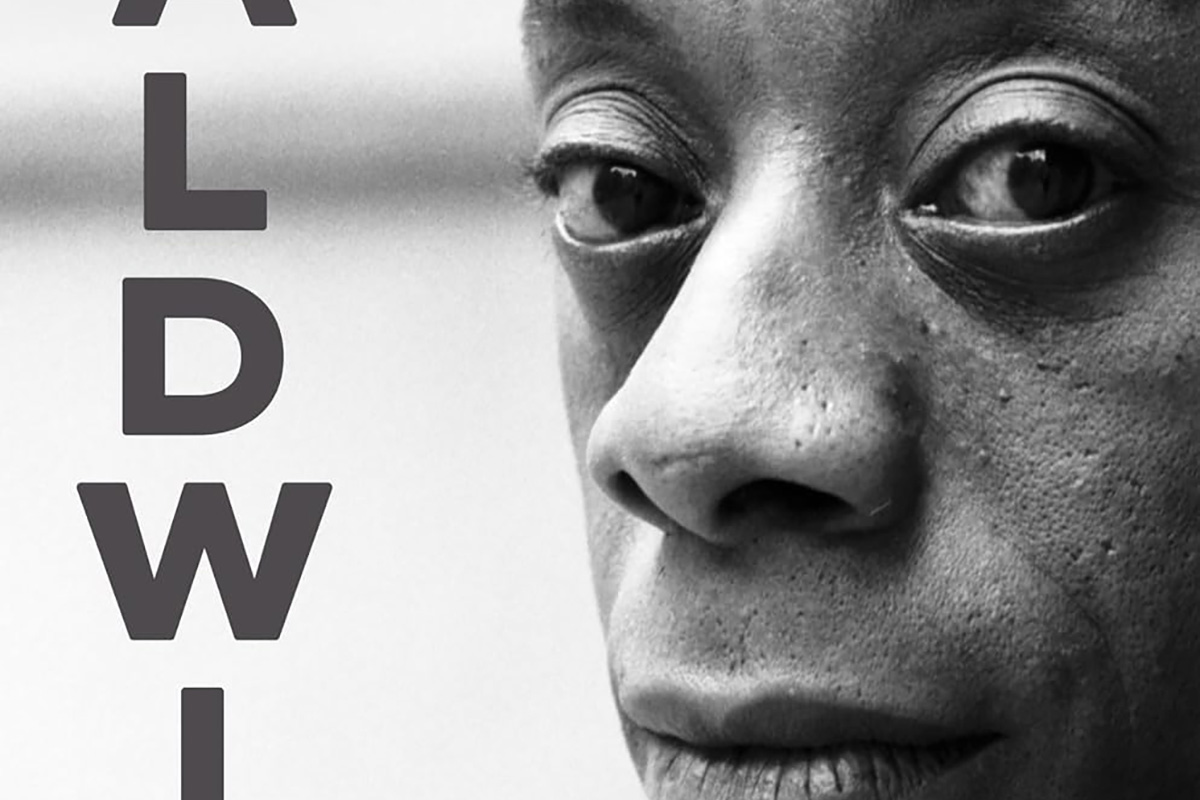
‘Baldwin: A Love Story’
By Nicholas Boggs
c.2025, FSG
$35/704 pages
“Baldwin: A Love Story” is a sympathetic biography, the first major one in 30 years, of acclaimed Black gay writer James Baldwin. Drawing on Baldwin’s fiction, essays, and letters, Nicolas Boggs, a white writer who rediscovered and co-edited a new edition of a long-lost Baldwin book, explores Baldwin’s life and work through focusing on his lovers, mentors, and inspirations.
The book begins with a quick look at Baldwin’s childhood in Harlem, and his difficult relationship with his religious, angry stepfather. Baldwin’s experience with Orilla Miller, a white teacher who encouraged the boy’s writing and took him to plays and movies, even against his father’s wishes, helped shape his life and tempered his feelings toward white people. When Baldwin later joined a church and became a child preacher, though, he felt conflicted between academic success and religious demands, even denouncing Miller at one point. In a fascinating late essay, Baldwin also described his teenage sexual relationship with a mobster, who showed him off in public.
Baldwin’s romantic life was complicated, as he preferred men who were not outwardly gay. Indeed, many would marry women and have children while also involved with Baldwin. Still, they would often remain friends and enabled Baldwin’s work. Lucien Happersberger, who met Baldwin while both were living in Paris, sent him to a Swiss village, where he wrote his first novel, “Go Tell It on the Mountain,” as well as an essay, “Stranger in the Village,” about the oddness of being the first Black person many villagers had ever seen. Baldwin met Turkish actor Engin Cezzar in New York at the Actors’ Studio; Baldwin later spent time in Istanbul with Cezzar and his wife, finishing “Another Country” and directing a controversial play about Turkish prisoners that depicted sexuality and gender.
Baldwin collaborated with French artist Yoran Cazac on a children’s book, which later vanished. Boggs writes of his excitement about coming across this book while a student at Yale and how he later interviewed Cazac and his wife while also republishing the book. Baldwin also had many tumultuous sexual relationships with young men whom he tried to mentor and shape, most of which led to drama and despair.
The book carefully examines Baldwin’s development as a writer. “Go Tell It on the Mountain” draws heavily on his early life, giving subtle signs of the main character John’s sexuality, while “Giovanni’s Room” bravely and openly shows a homosexual relationship, highly controversial at the time. “If Beale Street Could Talk” features a woman as its main character and narrator, the first time Baldwin wrote fully through a woman’s perspective. His essays feel deeply personal, even if they do not reveal everything; Lucian is the unnamed visiting friend in one who the police briefly detained along with Baldwin. He found New York too distracting to write, spending his time there with friends and family or on business. He was close friends with modernist painter Beauford Delaney, also gay, who helped Baldwin see that a Black man could thrive as an artist. Delaney would later move to France, staying near Baldwin’s home.
An epilogue has Boggs writing about encountering Baldwin’s work as one of the few white students in a majority-Black school. It helpfully reminds us that Baldwin connects to all who feel different, no matter their race, sexuality, gender, or class. A well-written, easy-flowing biography, with many excerpts from Baldwin’s writing, it shows how much of his life is revealed in his work. Let’s hope it encourages reading the work, either again or for the first time.
-

 U.S. Supreme Court5 days ago
U.S. Supreme Court5 days agoSupreme Court to consider bans on trans athletes in school sports
-
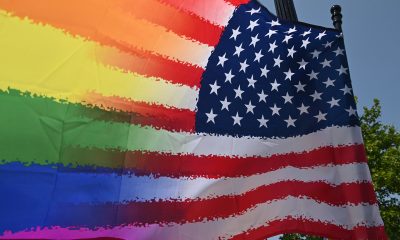
 Out & About5 days ago
Out & About5 days agoCelebrate the Fourth of July the gay way!
-

 Virginia5 days ago
Virginia5 days agoVa. court allows conversion therapy despite law banning it
-
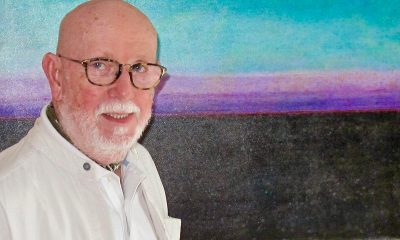
 Obituary5 days ago
Obituary5 days agoLongtime DC resident Thomas Walsh dies at 87












